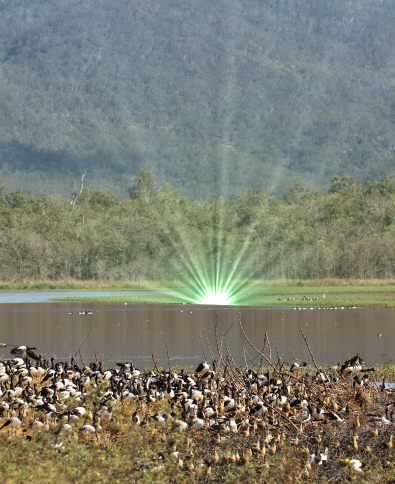Swamps plugged as great carbon holders
 Researchers believe the humble swamp could be up to 50 times more effective than rainforests at storing carbon.
Researchers believe the humble swamp could be up to 50 times more effective than rainforests at storing carbon.
Deakin University scientists are undertaking a study to investigate how wetland areas could help to win the battle against climate change.
International expert on freshwater and estuarine ecology Dr Rebecca Lester said the team's research involved quantifying the level of carbon stocks in south-west Victorian wetlands, as well as identifying the impact of wetland restoration on those stocks.
“The measurement tools will enable natural resource managers and landholders to reliably estimate and enhance their carbon sequestration, adding to the global effort in addressing climate change,” Dr Lester said.
“Our current usage of natural resources is unsustainable, and it is likely to become even more so under climate change.
“Our preliminary studies suggest that wetlands can sequester up to 33 per cent of the carbon in terrestrial soils, yet they only take up about four per cent of the earth's land surface.
“While research on carbon capture has so far focussed on terrestrial and coastal ecosystems, such as carbon farming initiatives and so-called 'blue carbon' capture through seagrass, recent data indicates freshwater ecosystems could be up to 50 times more effective in carbon burial efficiencies, compared to land-based ecosystems like rainforests.
“Despite the clear potential for wetlands to mitigate climate change, to our knowledge, this is the first study to quantify sequestration in temperate freshwater Australian wetlands, and one of few worldwide.
“Biosequestration, meaning carbon capture and storage through biological processes, is regarded as one of the single largest opportunities for reducing CO2 emissions in Australia.
“One of the reasons wetlands may be better than forests at carbon capture is because of the way sediments and organic matter, such as leaves, build up under water. There, they are likely to break down more slowly, thus acting as a carbon sink,” she said.
Once covering around 10 per cent of the earth's land mass, wetlands - which are often seasonal - are defined as low-lying areas that support plants and animals that rely on surface water.
They range from such high profile wetlands as Kakadu, or Victoria's Hattah Lakes, to any local swamp. Many, such as the Koo Wee Rup swamp in Gippsland, have been drained, as their characteristic build-up of organic matter makes excellent farming land.
“Yet, in the future, their agricultural value will have to be weighed against their value as carbon sinks,” Dr Lester said.







 Print
Print